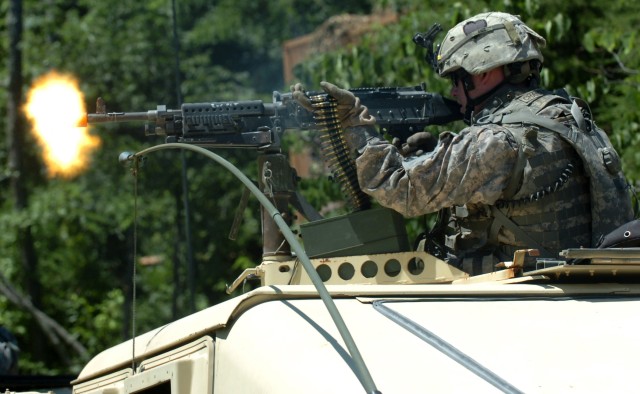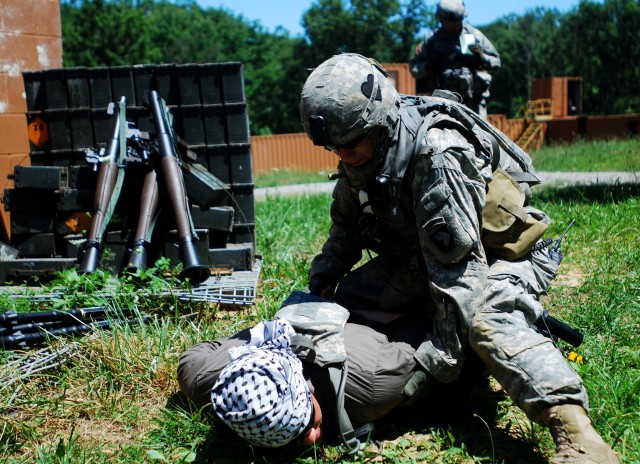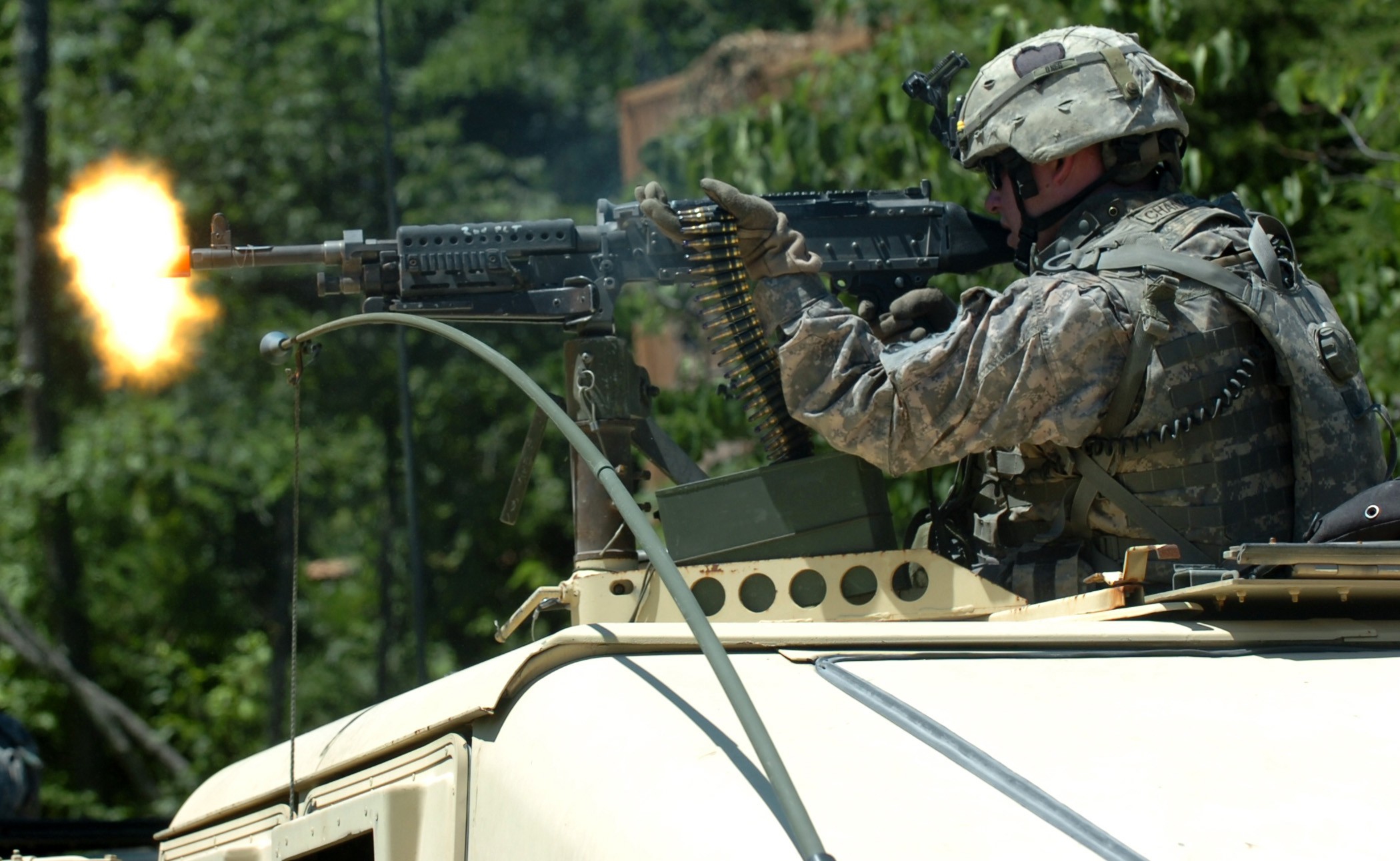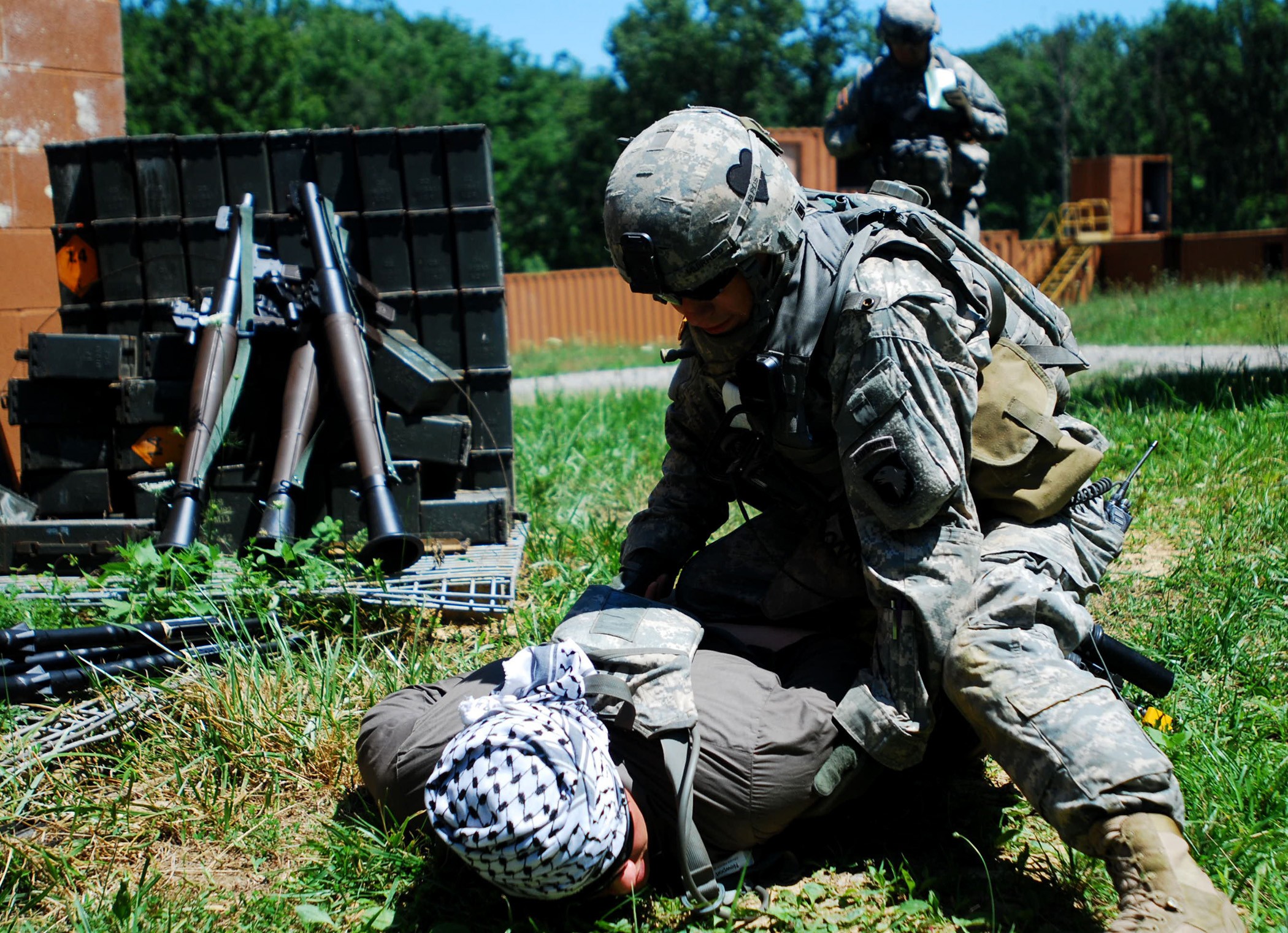FORT KNOX, Ky., (July 23, 2009) - Gen. George S. Patton once said, "An Army is a team; lives, sleeps, eats, fights as a team."
Teams, even at the smallest levels are crucial to the success of any mission and the Soldiers and leaders of the 1st Squadron, 75th Cavalry Regiment, 2nd Brigade Combat Team, 101st Airborne Division, understand that concept all too well.
Strike Cavalry Soldiers focused solely on team building during their Eagle Flight One training at Fort Knox July 6-17.
"The purpose of executing Eagle Flight One training is to focus on individual, section and squad level training; smaller unit tactics is what we're focusing on," said Maj. Chess Lamm, squadron's executive officer.
With team building exercises comes many incentives - improving communications, motivating a team, helping Soldiers learn more about their strengths and weaknesses, improving team productivity and practicing effective collaboration with the other team members.
One of the courses available at Knox that promotes team cohesion is at the Wilcox Firing Range.
This course utilizes the driver, gunner and truck commander. Effectively, the team must interact with each other while on a notional combat patrol. While inside their Humvee, with a mounted .50-caliber machine gun atop, they roll through an "enemy infested" course which includes pop-up targets and mock-snipers.
"It's working crew proficiency with cross talk between the gunner and the driver," said 1st Lt. Jedidiah Wentz, a team leader with Troop A, 1-75th Cav. Regt.
These are the same kind of scenarios and situations that will be seen in a counter-insurgency fight, so they must work together as team, added Wentz.
"Right now we have a lot of novice drivers, so it is giving them a chance to [know] what to do during engagement with the enemy while on a mounted patrol," said Spc. Tyrel Kerr, driver with Troop A.
Kerr also went on to explain the presence of a lot of new gunners who are unfamiliar with shooting live .50-caliber rounds and how communicating while firing the deafening weapon takes time and trial before the team can become effective. This course helps the teams become efficient in those areas.
If the driver jerks the wheel too much, or if the gunner is not paying attention and not seeing and announcing the targets, it could result in missing enemy targets and even casualties; this "deployable-like" training will help prevent that, added Wentz.
Another team-building exercise the Strike Cavalry Soldiers executed involved a four-man team assaulting a suspected weapons cache 100-meters away, while under enemy fire. This live-fire exercise trains the teams on how to properly advance on a shooting enemy using a system called buddy-team-bounding. With the use of verbal commands and tactical signals, the four-man team must effectively eliminate the enemy threat. With two Soldiers bounding forward about 20 meters, the other two men suppress the enemy fire. They continuously do so, until they have reached their objective.
Once they reached their objective, two notional homes sitting side-by-side, they have to successfully breach the doors and eliminate all known threats within the room.
Running out of ammunition, weapons jamming, locating targets, communicating with teammates in the midst of the loud gunfire are all factors that can occur during a raid and all of this can be fixed with rehearsal, said 1st Sgt. Larry Breiland, the first sergeant of Company C, during an after action review of the fast pace training.
Since coming back from the last deployment, there has been an absence of experienced teams, so this kind of training, on a live-fire course like this, will effectively train the new teams to shoot, move and communicate, said Capt. Michael Haith, commanding officer of Company C.
A very different team training course, known as Red Wing Village, involves four mounted Humvees entering a rural community with suspected enemy weapons cache and armed insurgents. This extremely large training village at Fort Knox is about two-acres, containing multiple-level buildings, roadways, hidden improvised exploding devices, a bridge and roaming role-players.
The only way that a mission, involving building raids and searches, can be successful is for the squad and the teams to work together. When two teams are raiding the same building, the proper procedures must be used, or casualties can result, said Sgt. Jesse Hattesohl, a team leader with Company C.
The team training course included blasts simulating detonated IEDs. One went off and a Soldier went down. His team secured the area, pulled him in a safe position, performed the tactical field care procedures and evacuated the casualty with one of the patrolling Humvees.
This team training course offers "combat-like" scenarios that are needed for these newly formed teams. The possibility of a similar situation during combat is high, so the more the teams are exposed to it during training, the better prepared they will be during the real thing.




Social Sharing